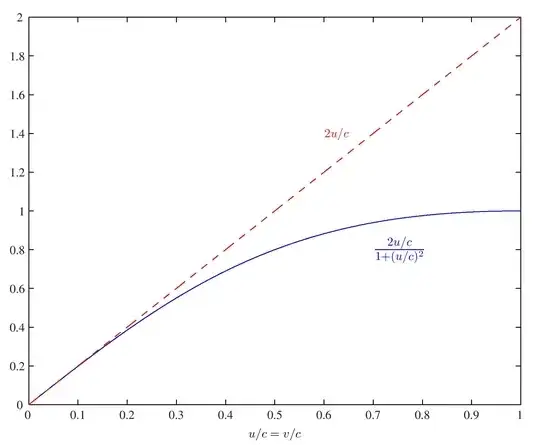In this question the accepted answer says:
For objects moving at low speeds, your intuition is correct: say the bus move at speed $v$ relative to earth, and you run at speed $u$ on the bus, then the combined speed is simply $u+v$.
But, when objects start to move fast, this is not quite the way things work. The reason is that time measurements start depending on the observer as well, so the way you measure time is just a bit different from the way it is measured on the bus, or on earth. Taking this into account, your speed compared to the earth will be $\frac{u+v}{1+ uv/c^2}$. where $c$ is the speed of light. This formula is derived from special relativity.
What is "fast" in this answer? Is there a certain cutoff for when it stops being $u+v$ and becomes $\frac{u+v}{1+ uv/c^2}$?
